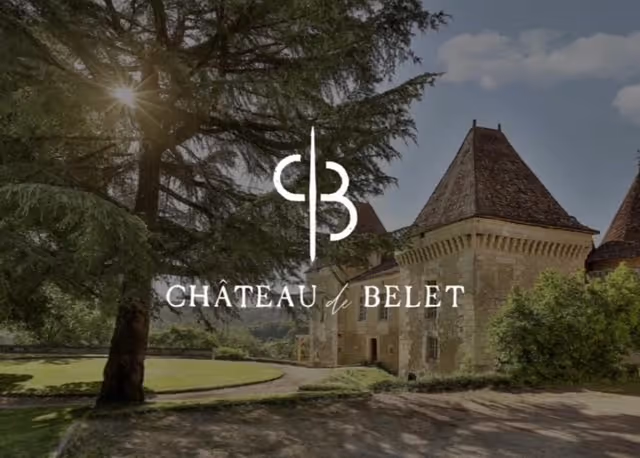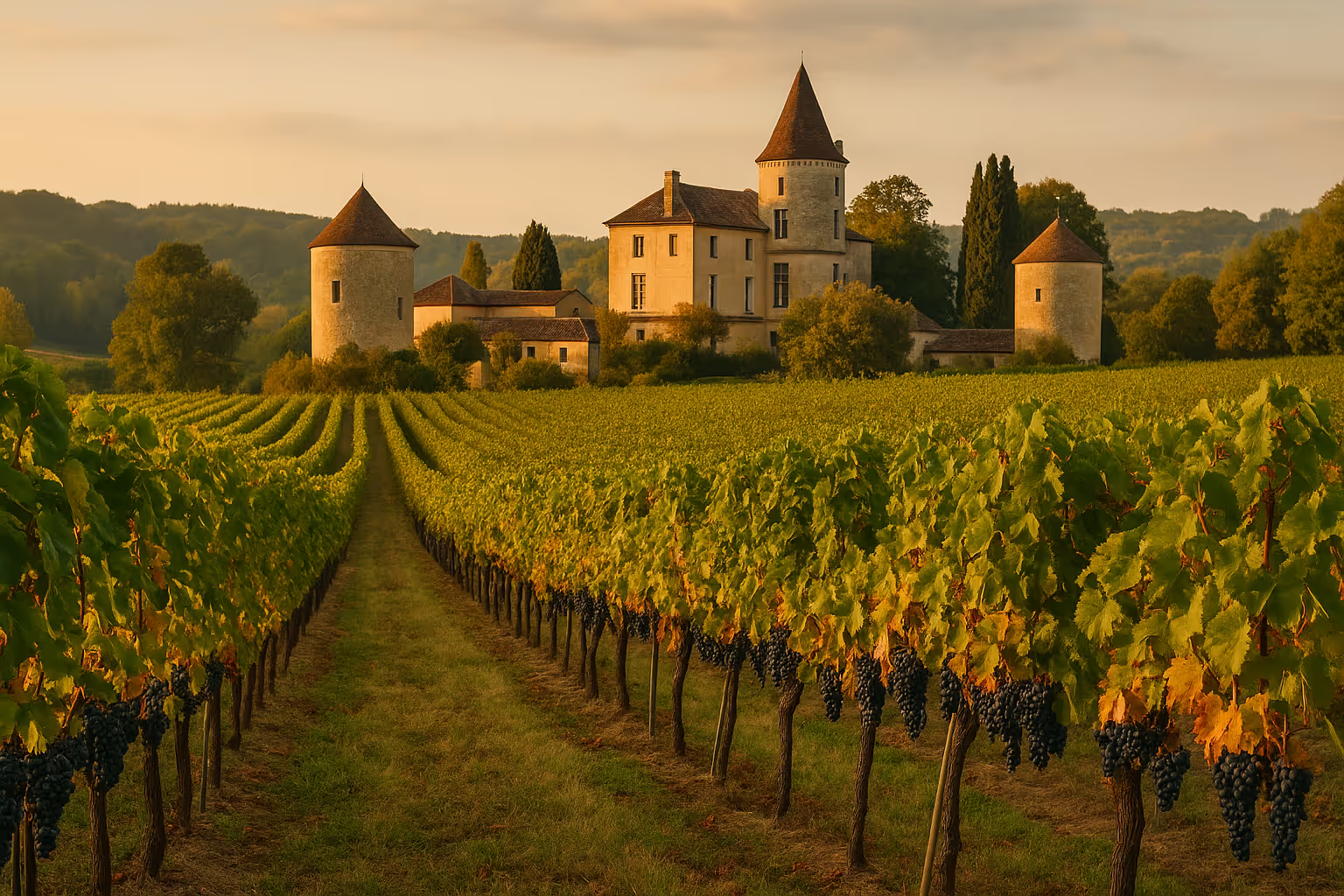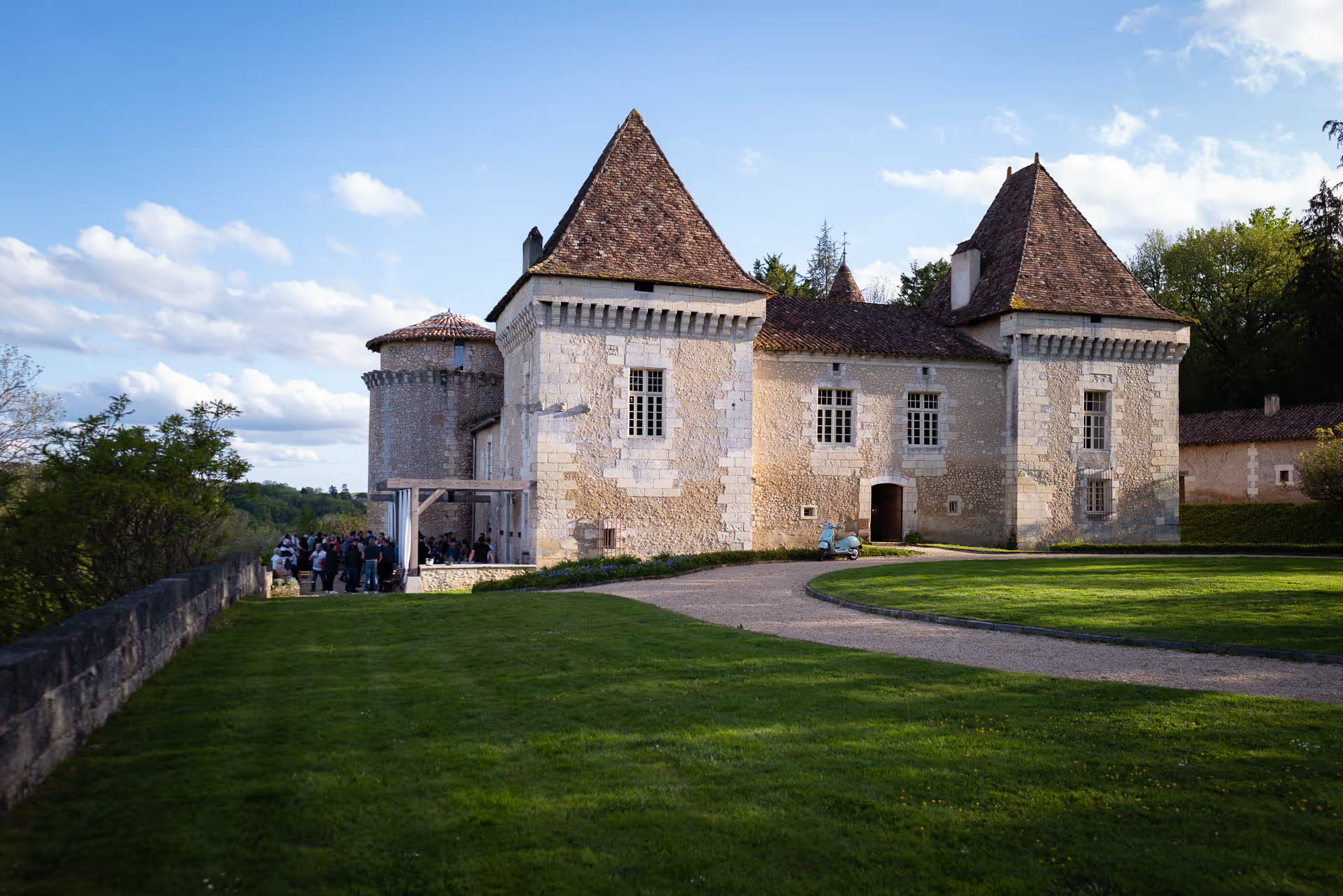From Forgotten to Five-Star: How Château de Belet Became a World-Class Case Study in Heritage Revitalization

The Dordogne region is world-renowned for its gentle hills, medieval villages, and, above all, its castles. With nearly 3,000 château-type properties scattered across its valleys and ridges, Dordogne is often called the land of 1,001 châteaux. Yet, behind this romantic image lies a sobering reality: many of these châteaux stand silent, empty, or decaying, slightly used by generational families. It is estimated that 15–20% of Dordogne’s châteaux are uninhabitable or in advanced disrepair, and another 30–40% are used only as summer homes, sitting dormant for most of the year. Château de Belet could easily have been one of them. When we arrived, it was a fading shadow of its former grandeur — large, beautiful, but underutilized and at risk of long-term abandonment. Instead of adding it to the list of forgotten stones, we saw a different future: a living, breathing estate that could become both a vibrant business and a timeless legacy. Today, Château de Belet stands as a world-class case study in heritage revitalization, showing how historical estates can be transformed into sustainable, profitable, and highly desirable lifestyle assets.
Many dream of owning a château, but few understand the hidden reality behind the romance. The cost of reviving even a mid-sized château can be staggering. Roof repairs alone often range from €500,000 to €1 million, depending on historical constraints and the complexity of original materials. Stone restoration, new electrical and plumbing systems, modern heating, and meticulous landscaping add substantial costs (DRAC Nouvelle-Aquitaine, 2022). French heritage laws (Monuments Historiques and other protections) further complicate the journey. While they preserve cultural value, they also require specific approvals, materials, and artisans — often doubling both timeline and budget. We recognized early on that if you cannot afford the project before engaging with heritage authorities, you certainly will not be able to afford it after they are finished. This guiding principle informed every decision at Belet and is at the heart of how we approach every new estate today.
We saw Belet not as a static monument, but as a dynamic platform for meaningful experiences. Rather than restoring it merely as a private residence or occasional summer retreat, we envisioned a multi-dimensional destination that could operate as a luxury private villa rental for global guests, host high-profile private events, offer immersive cultural and gastronomic experiences, create curated, pet-friendly countryside escapes, and serve as a foundation for future wellness and retreat programs. This repositioning allowed Belet to evolve from a financial liability into a profitable luxury hospitality and event brand — all while retaining its authentic soul.
Through Belet’s journey, we have extended our existing real world expertise to restore buildings, but how to position lifestyle and if desired a business around it. This experience inspired the creation of Veritatis Advisors, our consulting and advisory practice dedicated to helping other estate owners achieve similar transformations. At Veritatis Advisors, we guide château owners across France and beyond, bringing the same rigor and strategic insight that turned Belet into a showcase project. In each case, we integrate operational planning, business strategy, and heritage respect — and we engage Bâtiments de France (BdF) certified architects and other trusted architectural partners on an as-needed basis. By involving these experts from the outset, pre-purchase, we ensure that our clients receive solid advice, credible advice to inform their pre-purchase investment decisions, long before any design or regulatory approvals begin.
Before any plans, before calling an architect, and certainly before approaching DRAC or BdF, we undertook a comprehensive feasibility study. This critical step is often skipped by enthusiastic buyers or worse yet abandoned mid stream, ignored and offerto purchase made— a mistake that can lead to costly delays and unmanageable overruns later. We appreciate the emotional desire of owning heritage can overwhelm reality. At Belet, our feasibility phase included complete architectural 3D condition surveys with specialized architects, detailed financial modeling and phased cost forecasting with generous contingency allowances, operational business planning outlining viable revenue streams (luxury rentals, events, gastronomy, wellness), market positioning analysis defining target guest segments and brand narrative, and risk profiling covering zoning, seasonal access, insurance, and long-term maintenance implications. This study was completed before engaging in any pre-purchase discussions. In other projects, we strongly advise completing this feasibility work even before considering meetings with DRAC or BdF, as these agencies almost always add budget, extend timelines, and increase complexity. The honest truth: if a project is financially out of reach before regulatory obligations, it will only become more so once they are included. This approach provided us with clarity, realistic expectations, and a solid foundation for every future decision.
Once feasibility was proven, we turned to guest experience design — because a château without life is just an empty shell, no matter how beautifully restored. At Belet, each detail was carefully orchestrated to tell a cohesive story and offer guests true immersion: exclusive culinary experiences including private chef dinners inspired by the region’s rich traditions; personalized local excursions such as truffle hunting, market tours, and vineyard visits; event-specific adaptations allowing the château to transform seamlessly for weddings, corporate retreats, and intimate gatherings; wellness and countryside programming including yoga, forest bathing, and pet-friendly hiking routes. We explicitly chose not to behave like a hotel or restaurant, but to privately curate everything, like a true family home. This deliberate curation elevated Belet from a “pretty place to stay” to a five-star lifestyle brand, positioning it among the most desirable private rentals in France.
At Belet, we acted as our own owner's representative — a role that demanded constant on-site presence, coordination with architects and artisans, budget oversight, and operational alignment. This deeply hands-on approach is a hallmark of Veritatis Advisors today. We believe an owner’s representative must be more than an intermediary; they are the guardian of the vision, the steward of the budget, and the keeper of the guest promise. By maintaining strict oversight, we ensured that every euro spent supported both heritage integrity and future business viability. As certified project manager and real estate professionals we have "been there, done that" as part of our way of working.
Many château restorations focus purely on aesthetics — chasing glossy magazine covers without considering soul. At Belet, we chose a different path. Our design decisions, materials, and guest experiences were all anchored in authenticity. We celebrated the estate’s layered history: medieval hunting traditions, 18th-century agricultural life, and its transformation into a modern hospitality haven. This depth of story resonated powerfully with guests and helped justify premium pricing. A well-told narrative does more than attract — it inspires loyalty and sparks word-of-mouth that no marketing budget can buy.
The luxury hospitality market has undergone a revolution. Privacy, personalization, and experiential depth now matter more than mere opulence. According to the 2023 Knight Frank Wealth Report, 56% of UHNW individuals are actively seeking lifestyle-driven investments, including heritage properties. The French National Committee of Tourism has reported a 38% increase in private château rentals since 2021, driven by multi-generational trips and wellness-focused escapes. Belet was deliberately designed to meet this shift head-on. Rather than depend on large-volume bookings or mass tourism, it caters to discerning guests seeking private, transformative experiences where occupancy floats for higher rates.
Today, Château de Belet is not merely a beautifully restored building. It is a living case study in successful château revitalization. It stands as proof that a thorough feasibility study is essential — and must be done before any regulatory engagement; that heritage integrity and commercial viability can coexist, but only through disciplined strategy; that thoughtful experiential design creates true value and lasting guest loyalty; and that active, engaged ownership is critical to success. Through Belet, we have shown that even the most forgotten stones can become luminous again — not just as luxury showpieces, but as dynamic, self-sustaining businesses that celebrate history while embracing the future.
Château de Belet’s journey offers a clear blueprint for other estate owners and investors: it is possible to honor the past, build a vibrant present, and secure a future that is both emotionally and financially rewarding. At Veritatis Advisors, we are dedicated to helping other visionaries achieve similar outcomes — transforming dormant or underused estates into living legacies. In each project, we integrate strategic planning with deep respect for heritage, and we engage BdF-certified architects and trusted experts on an as-needed basis to provide informed, rigorous advice from the earliest stages. Whether you are considering your first château purchase, planning a full-scale redevelopment, or simply exploring ways to unlock hidden value in an existing estate, we invite you to learn from Belet’s story — and to imagine what your own could become.
Looking ahead, as Château de Belet continues to evolve, we remain deeply committed to ensuring its legacy lives on. Whether through future new chapters, partnerships, or welcoming a new steward who shares our vision, our mission remains the same: to celebrate history while creating vibrant, living experiences. In an upcoming article, we will share how this philosophy shapes our next steps — and what it means for all who have grown to love Belet as much as we do.
References: Maxwell-Baynes Real Estate, The Land of 1,001 Castles: Dordogne Market Insights, 2023. French Ministry of Culture, Inventaire général du patrimoine culturel, 2021–2023. DRAC Nouvelle-Aquitaine, Guidelines on Restoration and Funding for Protected Heritage, 2022. Savills, Prime Residential and Heritage Asset Investment Report, 2022. Knight Frank, The Wealth Report, 2023. French National Committee of Tourism, Annual Private Rental Trends and Market Report, 2023.






